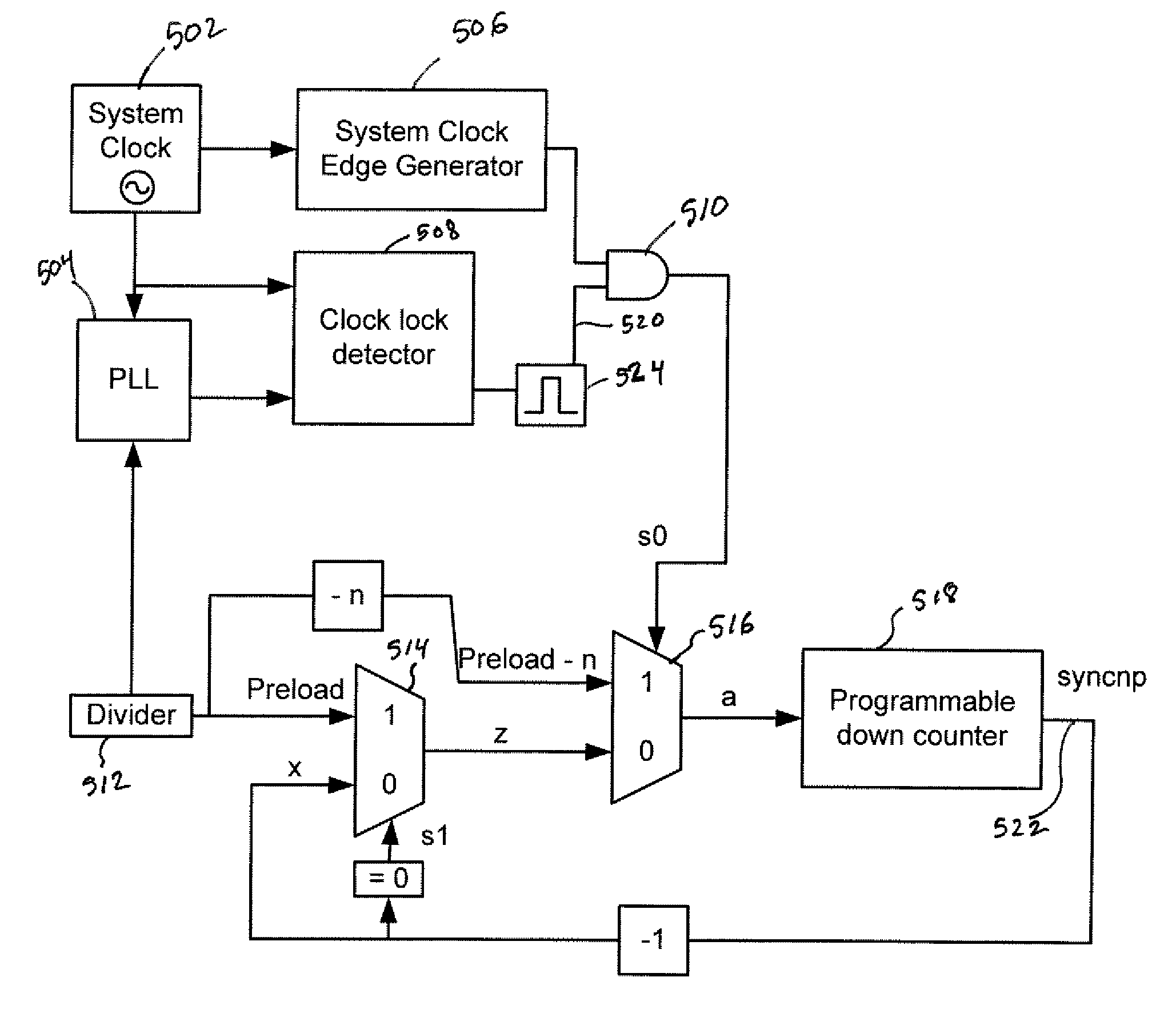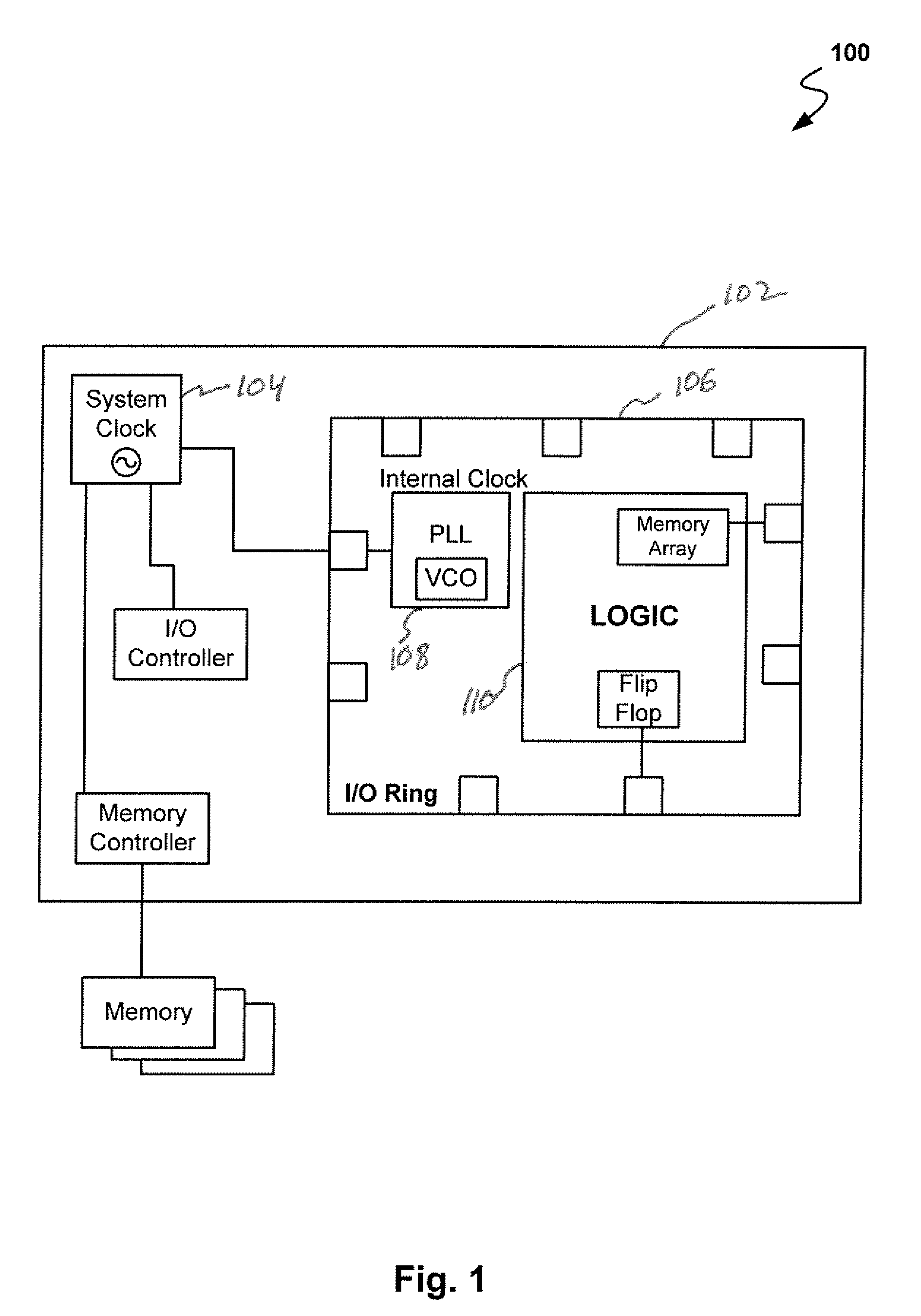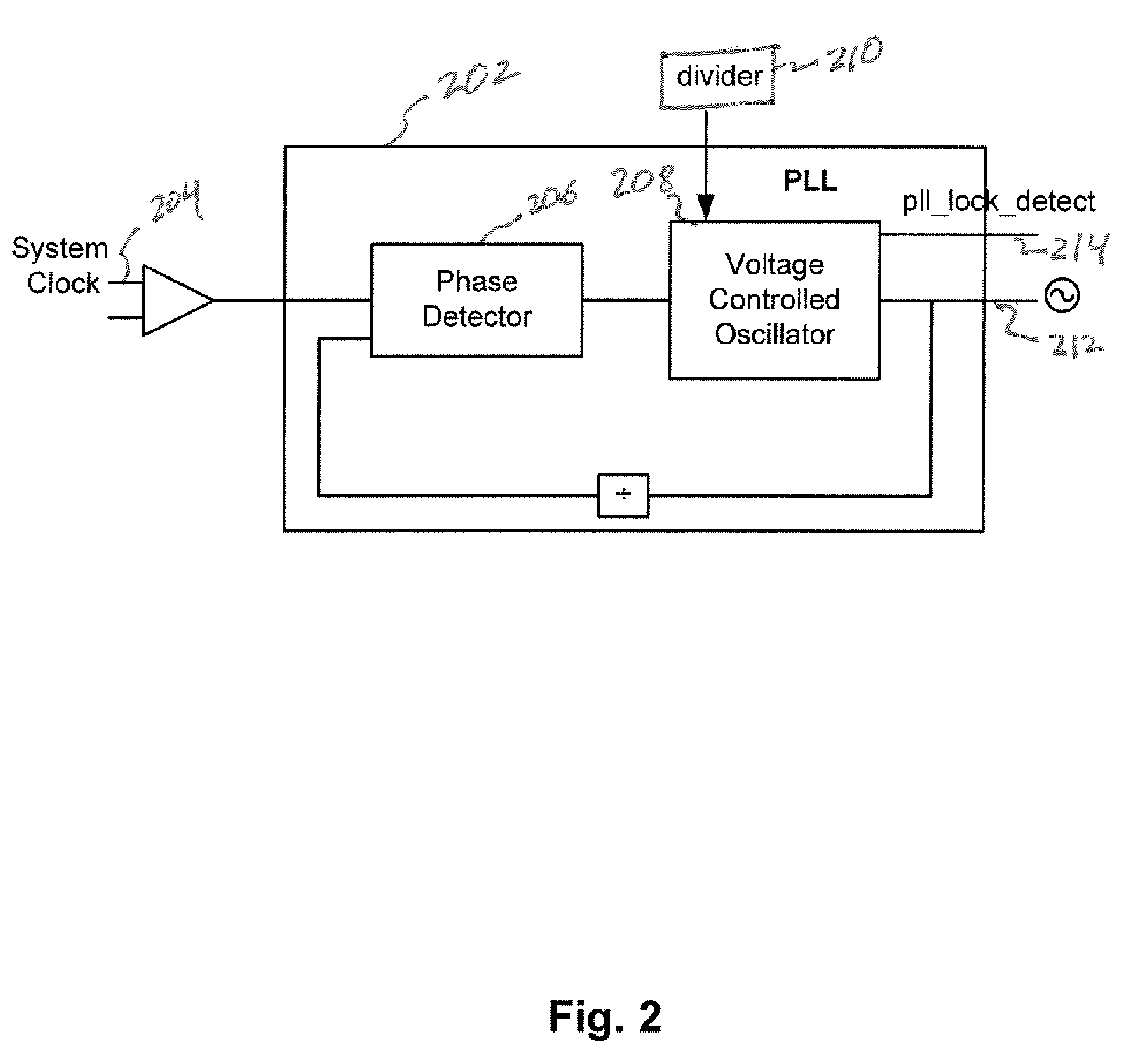Method and apparatus to generate system clock synchronization pulses using a pll lock detect signal
- Summary
- Abstract
- Description
- Claims
- Application Information
AI Technical Summary
Benefits of technology
Problems solved by technology
Method used
Image
Examples
Embodiment Construction
[0022]Method and apparatus for generating system clock synchronization pulses using a Phase Locked Loop (PLL) lock detect signal are provided. The method includes generating a clock lock detect, or pll_lock_detect, signal indicative that a system clock is synchronized with an internal clock, and determining an initial count value. Then, start counting beginning at a first rising edge of the system clock after the clock lock detect signal is generated, the counting starting with the initial count value. The method further includes generating a synchronization pulse (syncnp) when the counting ends, where the syncnp indicates the beginning of the next system clock cycle after n internal clock cycles, and continue generating syncnps separated by one system clock cycle so as to continue indicating the beginning of the next system clock cycle.
[0023]These syncnp signals are always in the same relative internal clock cycle relative to the system clock rising edge. The second ‘n’ in ‘syncnp’...
PUM
 Login to View More
Login to View More Abstract
Description
Claims
Application Information
 Login to View More
Login to View More - R&D
- Intellectual Property
- Life Sciences
- Materials
- Tech Scout
- Unparalleled Data Quality
- Higher Quality Content
- 60% Fewer Hallucinations
Browse by: Latest US Patents, China's latest patents, Technical Efficacy Thesaurus, Application Domain, Technology Topic, Popular Technical Reports.
© 2025 PatSnap. All rights reserved.Legal|Privacy policy|Modern Slavery Act Transparency Statement|Sitemap|About US| Contact US: help@patsnap.com



